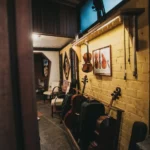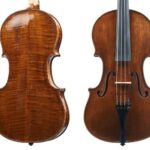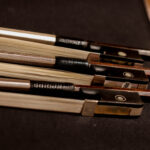Analysis of Fine Antique Instruments: The Amorim Lab
Back to BlogRevealing the Secrets: Our Diagnostic Techniques
At The Amorim Lab, we dedicate our expertise to the meticulous analysis of fine antique instruments, using advanced diagnostic tools and scientific approaches to reveal their hidden stories, origins, and conditions. Every examination is guided by our commitment to preserving and understanding these masterpieces, and we employ a range of specialised techniques to achieve this:
|
|
|
|
At The Amorim Lab, each instrument receives an individualized assessment, combining these diagnostic tools to provide a comprehensive picture of its authenticity, history, and condition. This rigorous process supports informed decisions for both preservation and appreciation, helping collectors, musicians, and restorers connect more deeply with their instruments.
We’re proud to share these insights and contribute to the legacy of fine instrument making. Whether you’re an owner, collector, or simply an enthusiast, The Amorim Lab offers a trusted resource for understanding and preserving the art of these remarkable instruments.









